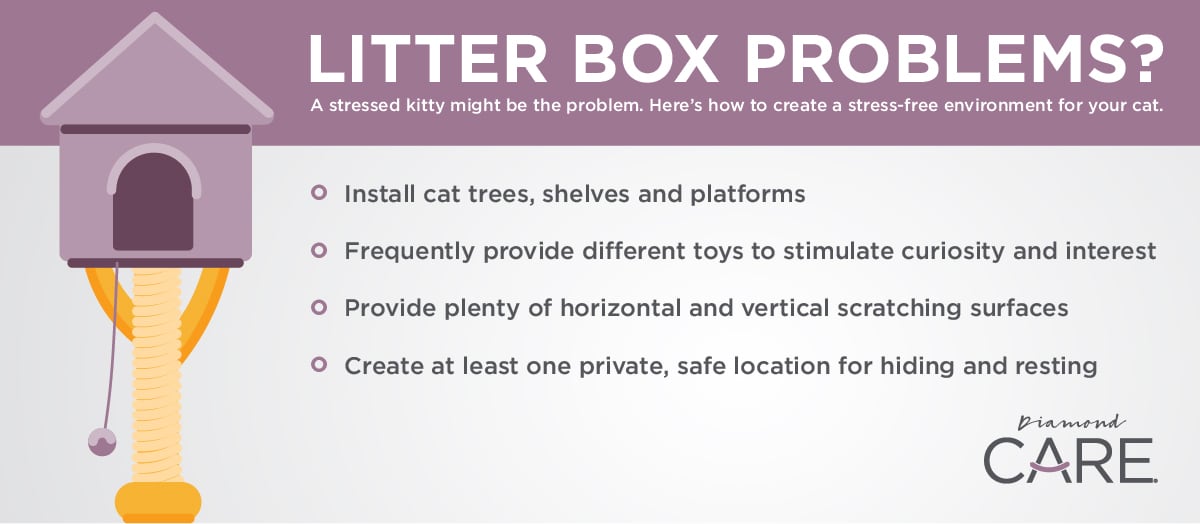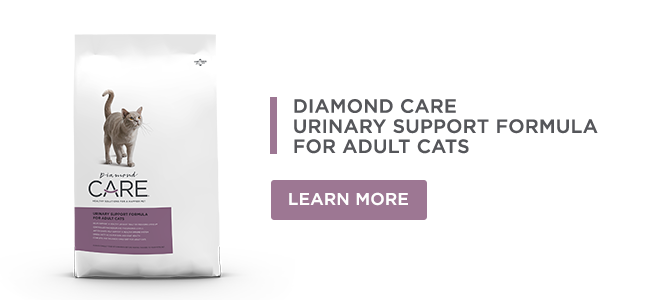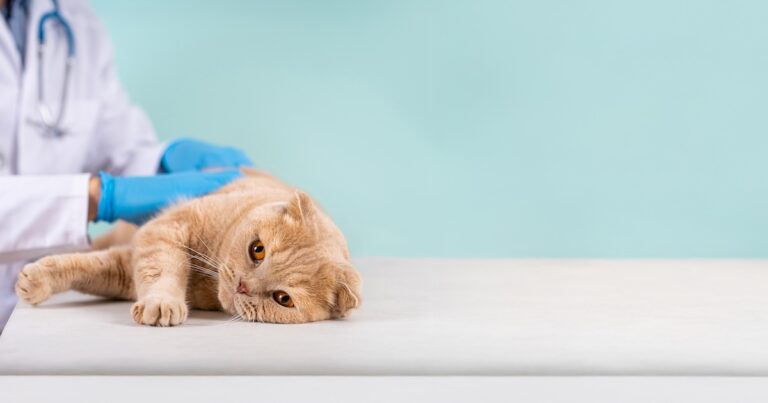Would it surprise you to learn that your home’s environment can have a direct effect on your cat’s urinary tract health? The truth is, your cat’s surroundings are home to several potential stress triggers, ranging from house guests or new members to conflict with other cats, lack of vertical space and not enough hiding places.
Urinating outside the litter box can be one of the first signs of feline stress. Inappropriate urination is a common symptom of feline lower urinary tract disease (FLUTD), and veterinarians now know stress plays an important role in feline idiopathic cystitis (FIC), the condition that accounts for two-thirds of FLUTD cases.
Environmental stressors and cat urinary health
Some cats are easily stressed, and, as we discussed in a previous post, cats with FIC have been found to have an exaggerated stress response as a result of having higher levels of norepinephrine (a neurotransmitter and stress hormone) in their blood and bladder walls compared to normal cats. Cats with FIC may also have damage to the bladder lining that allows urine to contact the underlying tissue, causing irritation and/or inflammation and pain. Reducing a cat’s stress is now considered the most effective approach to managing FIC in cats.
But what could cause a cat to feel stressed?
It turns out that a wide variety of things can trigger stress, depending on the cat.
Cats are sensitive creatures by nature. They’re also creatures of habit and like routine — just like some people. As a result, any disruption or change — big or small — in daily routine can cause stress. Big changes in a cat’s life, like moving to a different home or adding a new pet, could cause short-term stress. Most cats will adjust to the change within a reasonable time frame, but cats with FIC may remain stressed, which can lead to urinary problems.
More challenging sources of stress are those long-term situations that don’t have quick fixes. What’s the most common long-term stressor for a cat? A 2004 study of cats with and without FIC found the most common long-term stressor for cats was conflict with another cat in the home. While temporary stress and adjustment time is expected as part of introducing a new pet, conflict between two or more cats may be stressful enough to trigger an FIC episode.
Another factor to consider is your own stress level. Cats, like dogs, are very good at sensing our emotions. When we get stressed, they may respond to that stress, too. And since cats tend to communicate with us through behaviors, you’ll want to watch for any changes in how your cat behaves.
Other factors that contribute to feline stress include litter box, food and water preferences. Litter boxes that are dirty, too small, hard to reach (e.g., located in the basement) or located in a high-traffic area may cause stress. The scented cat litter that smells pleasant to you may overwhelm your cat’s sense of smell and prompt your cat to urinate someplace else.
Creating a stress-free environment for your cat
Urinary issues in cats, including those triggered by stress, are often lifelong conditions that require lifelong care. Eliminating your cat’s stress and anxiety may not always be possible, but there are things you can do that help.

Enriching your cat’s environment is one of the most beneficial steps you can take to reduce your cat’s stress.
- Install cat trees, shelves and platforms to allow your cat to explore his or her home territory both vertically and horizontally. A perch located near a window lets your cat survey the environment inside and out while providing stimulation and entertainment.
- Frequently change out toys to stimulate curiosity and interest. Moving toys that mimic small prey let your cat exercise his or her hunting instinct.
- Provide plenty of scratching surfaces, ideally both vertical and horizontal ones. (It just might save your furniture, too!)
- Make sure your cat has one or more private, safe locations for hiding and resting. Having plenty of hiding places helps cats feel safe.
Pheromone therapy or calming supplements may help some cats, but you’ll want to discuss these options with your veterinarian first.
Cats, especially outdoor cats, rely on scent communication and use pheromones to deliver their messages. Products containing synthetic versions of pheromones that mimic the feline facial pheromone — the one related to friendly, bonding messages — are widely available and used to help comfort a cat.
Calming supplements contain a wide variety of ingredients, ranging from herbs such as valerian and St. John’s wort to vitamins, amino acids and colostrum-calming complex to melatonin or tryptophan. Some calming treats may provide more of a sedative effect than others, so be sure to talk with your veterinarian.
Nutrition is almost always an important part of FIC or FLUTD treatment. While some cats benefit from a specific therapeutic diet, other cats can benefit from an over-the-counter specialty food like Diamond CARE Urinary Support Formula for Adult Cats. Feeding the right diet can help control urine mineral concentrations, maintain a healthy urine pH and help reduce inflammation. Before changing your cat’s food, you’ll want to talk with your veterinarian.
RELATED POST: What You Should Know About Feline Lower Urinary Tract Disease
RELATED POST: Signs, Symptoms and Management of Feline Idiopathic Cystitis








